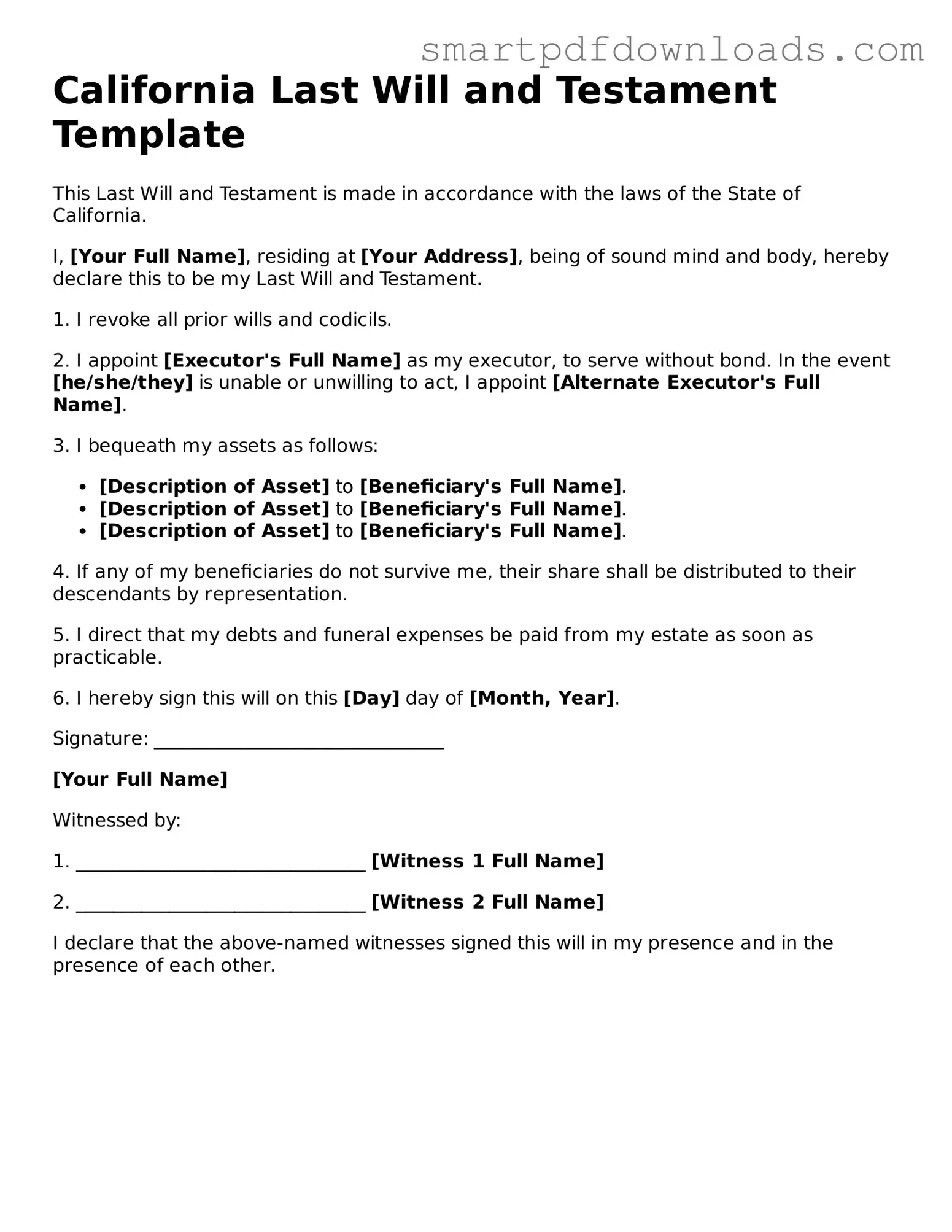California Last Will and Testament Template
This Last Will and Testament is made in accordance with the laws of the State of California.
I, [Your Full Name], residing at [Your Address], being of sound mind and body, hereby declare this to be my Last Will and Testament.
1. I revoke all prior wills and codicils.
2. I appoint [Executor's Full Name] as my executor, to serve without bond. In the event [he/she/they] is unable or unwilling to act, I appoint [Alternate Executor's Full Name].
3. I bequeath my assets as follows:
- [Description of Asset] to [Beneficiary's Full Name].
- [Description of Asset] to [Beneficiary's Full Name].
- [Description of Asset] to [Beneficiary's Full Name].
4. If any of my beneficiaries do not survive me, their share shall be distributed to their descendants by representation.
5. I direct that my debts and funeral expenses be paid from my estate as soon as practicable.
6. I hereby sign this will on this [Day] day of [Month, Year].
Signature: _______________________________
[Your Full Name]
Witnessed by:
1. _______________________________ [Witness 1 Full Name]
2. _______________________________ [Witness 2 Full Name]
I declare that the above-named witnesses signed this will in my presence and in the presence of each other.
